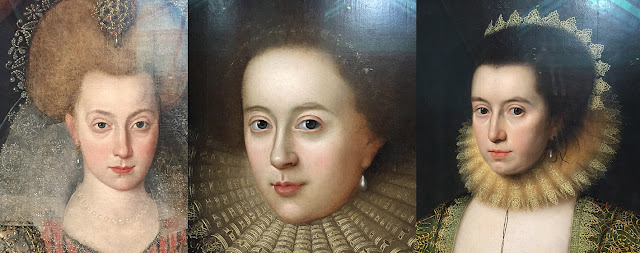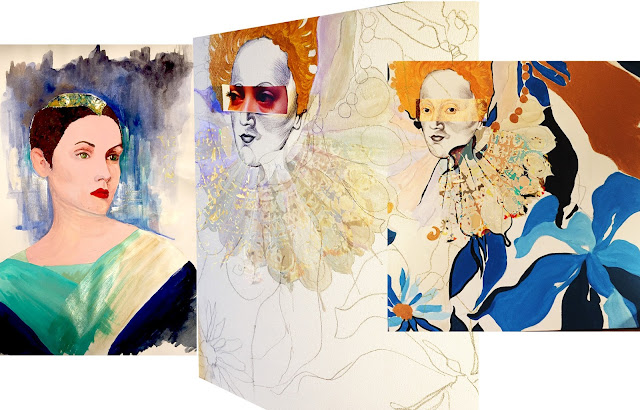MILLFIELD MADNESS
Maybe it's Millfield....maybe it's just Making Frames
Millfield exhibition:
Thank you to all of you who submitted images for the selection panel. Paul, Ian, Matthew Partington (MA Curating course leader) and myself selected from the digital submissions today.
Congratulations to Clare Wyatt, Jemma Gunning, Kar Mern Tan, Leonie Bradley and Wendy Picken whose work has been selected for the Postgraduate exhibition at Millfield, and who will be representing UWE as postgraduate students.
Hello Clare, Jemma, Kar Mern, Leonie and Wendy
I contacted Millfield today to ask if they had decided on their final selection for the show. They said they have had tons of applications so won’t be able to let us know until the New Year.
I had assumed if they had asked us to put things forward they would automatically be selected but it seems there is another selection process from them.
As soon as I know I will let you know........
 |
| 1. Mad-Donna,2. Dona, 3. armad-HER, 4. arnolfini the feminine |
Originally four of my digital prints were selected to represent UWE for a forthcoming post graduate exhibition at Millfield. I am informed that I have one print on the 'reserved' list.
Whether my work is to be exhibited or not, all chosen pieces needed framing. With a Renaissance theme still the thread colouring my current work I decided to attempt making my own frames for cost purposes, but also look at sourcing reclamation frames in a more ornate style in keeping with National Gallery paintings. These reclamation frames could be a display possibility for my end of year show or future exhibitions.

 The digital pieces I submitted are all 42 cm x 59 cm and will be mounted and framed at A1 size. Jemma organised a framing workshop where Justin (nice man, nice beard, no sandals or halo but revered in the wood department) instructed us in the art of frame making. I had no idea making ones own frame could be straightforward but conversely so complex, with a confusing array of ear bleedingly noisy power tools, a myriad of wood samples, mathematical measuring accuracy, precision cutting and knot tying skills.
The digital pieces I submitted are all 42 cm x 59 cm and will be mounted and framed at A1 size. Jemma organised a framing workshop where Justin (nice man, nice beard, no sandals or halo but revered in the wood department) instructed us in the art of frame making. I had no idea making ones own frame could be straightforward but conversely so complex, with a confusing array of ear bleedingly noisy power tools, a myriad of wood samples, mathematical measuring accuracy, precision cutting and knot tying skills.

Over the course of two days (with Justin's assistance), I created four A1 frames - 59.4 cm x 84.1 cm (adding an extra 20 mm to each dimension). I used sections of knotted pine which were accurately measured and then cut into four pieces using an angled guillotine (satisfyingly crunchy noises ensued when the handle was pulled). Each side of the frame was glued at each corner and then bound with string (tied with a 'reef' knot) to hold the pieces in position until the glue dried. Once dry a sturdy back board was added and stapled into position.
 The next stage will be sanding and painting before glazing and the insertion of artwork and mount. Realistically, reclamation frames would provide more intricate and authentic presentation for my work. (I am in the process of resourcing suitable candidates for this. I have been researching a variety of reclamation yards in Bristol and Bath - these huge warehouse spaces are cold, cavernous and cathedral-like, packed full of wooden treasures waiting to be restored).
The next stage will be sanding and painting before glazing and the insertion of artwork and mount. Realistically, reclamation frames would provide more intricate and authentic presentation for my work. (I am in the process of resourcing suitable candidates for this. I have been researching a variety of reclamation yards in Bristol and Bath - these huge warehouse spaces are cold, cavernous and cathedral-like, packed full of wooden treasures waiting to be restored).
My own wooden treasures (frames) are now waiting patiently in my studio to be completed. They have yet to be glazed and filled with the window mount and finished print. The simple pine wood lengths used for the basic frame structure will eventually be sanded by hand, distressed with gold paint and finally varnished ready for future display - wherever that may be!

 I took these photographs at the National Gallery. The portrait paintings of the Countess of Somerset and the Countess of Pembroke (Lady Anne Clifford) by William Larkin were interesting as the surface of the paintings were extremely glossy and reflective - having similarities to the test canvasses and glossy pigments I am working with.
I took these photographs at the National Gallery. The portrait paintings of the Countess of Somerset and the Countess of Pembroke (Lady Anne Clifford) by William Larkin were interesting as the surface of the paintings were extremely glossy and reflective - having similarities to the test canvasses and glossy pigments I am working with.





















